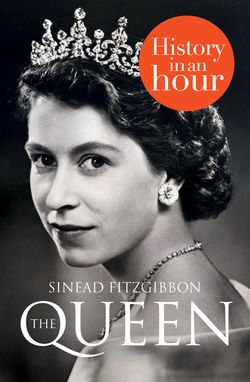Читать книгу The Queen: History in an Hour - Sinead Fitzgibbon - Страница 5
An Uncommon Marriage
ОглавлениеGeorge did not stop there. Having successfully rebranded his branch of the family tree, this politically savvy king introduced yet another innovation which would further bolster his British credentials – he decided to break with tradition and allow his children to marry into British commoner (or non-Royal) families. Up to now, in order to strengthen their ties with their European neighbours, it had been the Hanoverian habit to marry their children off to scions of other Continental royal families. But now, George’s offspring were free to choose a spouse from the sons and daughters of British aristocratic clans.
One of the first members of the Royal Family to take advantage of the opportunity to introduce some ‘new blood’ into the lineage was George’s second son, Prince Albert, the Duke of York (known to all as Bertie). After a two-year courtship, during which she twice refused his proposals of marriage, Bertie finally became engaged to Lady Elizabeth Bowes-Lyon in January 1923.
Bertie and Elizabeth (1920s)
When the wedding of Lady Elizabeth (a daughter of the Scottish Earl of Strathmore) and the Duke of York took place in Westminster Abbey on 26 April of the same year, the union was welcomed by an enthusiastic British public. Crowds lined the streets to cheer the newlyweds as they emerged from the Abbey, and large numbers congregated in front of Buckingham Palace to witness the couple’s brief appearance on the balcony. Evidence indeed that the British public’s love affair with their Royal Family had been rekindled.
As far as George V was concerned, it was mission accomplished.
The Birth of a Princess
After their high-profile nuptials, Bertie and Elizabeth would undoubtedly have preferred a peaceful start to their married life. But their royal status meant that, during the first few years at least, they were kept busy with a number of official visits abroad, no doubt calculated to capitalize on their popularity.
Then, after two years spent devoting themselves to their royal duties, the Duchess of York was delighted to discover, in the summer of 1925, that she was pregnant with the couple’s first child. Although the pregnancy was relatively uneventful, the birth proved to be difficult. Complications arose during the labour, which had begun a few days prematurely. To the relief of all concerned, the Duchess was finally delivered of a healthy daughter at 2.40 a.m. on 21 April 1926, at the couple’s home at 17 Bruton Street, Mayfair. The newspapers of the time stated, somewhat mysteriously, that the Duchess was obliged to undergo ‘a certain line of treatment’, thought to be a euphemism for the procedure now known as a Caesarian section.
When news of the safe arrival of their first granddaughter reached Buckingham Palace by telegram a little while later, King George V and his wife, Queen Mary, were overjoyed. They visited the newest addition to their family the following day, and the Queen wrote in her diary: ‘Such a relief and joy. Saw the baby who was a little darling with a lovely complexion and pretty fair hair.’ The child’s christening took place the following month, on 29 May, at Buckingham Palace, using water from the River Jordan. As is royal custom, the young Princess was given names from previous generations of her illustrious family – she was christened Elizabeth Alexandra Mary after her mother, great-grandmother and grandmother respectively.
The ceremony was a grand occasion, and despite having died twenty-five years previously, Queen Victoria’s imposing shadow loomed large over the event. The gold baptismal font, which had been used to christen of all Victoria’s children, was conveyed from Windsor Castle for the occasion, while the child’s christening gown was another relic from a bygone era, having been originally used for Queen Victoria’s first daughter. Interestingly, for a woman who would soon learn never to show her feelings in public, Princess Elizabeth’s incessant wailing throughout the ceremony left her parents in no doubt that she was immensely unimpressed with the whole affair.
